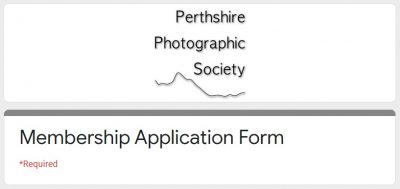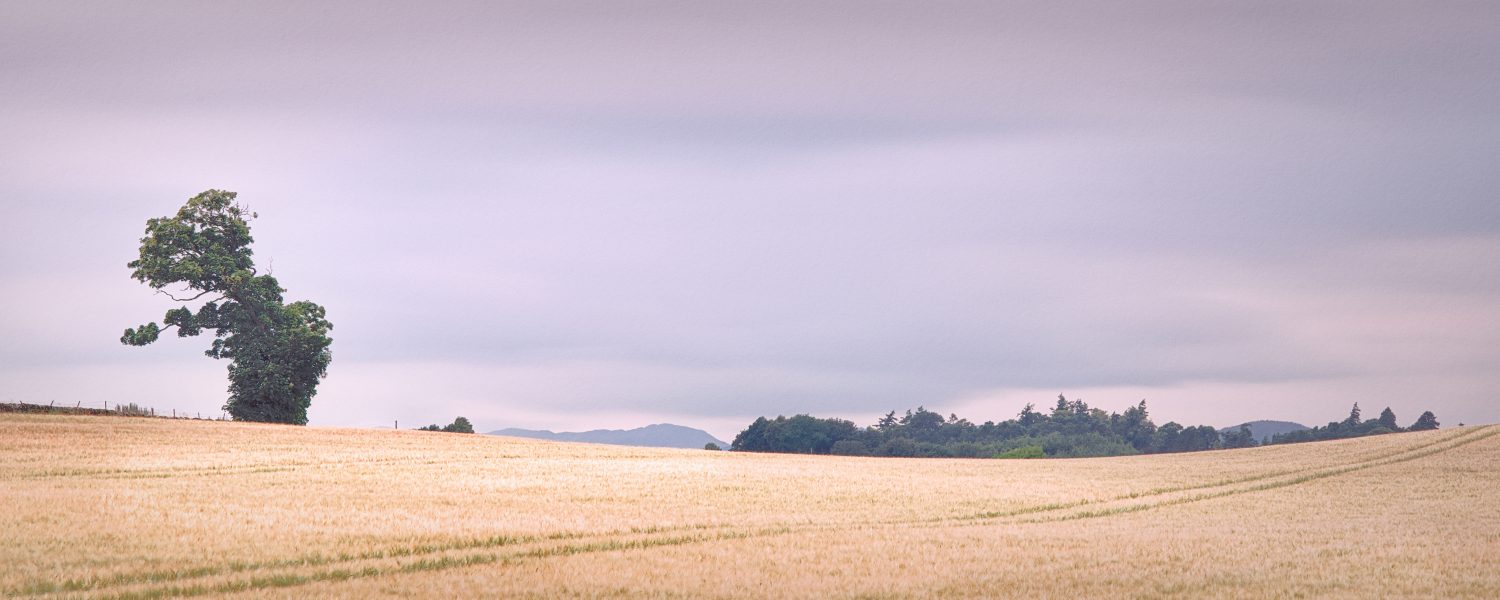Membership of PPS is open to anyone with an interest in Photography, and living within Perth, Perthshire, Perth and Kinross, and surrounding areas in Scotland.

The membership year runs for 12 months from October, to match the season of Society meetings from October to March – programme here – albeit the joining process will open earlier.
- September to December – new and re-joining members will complete the membership form and pay the full subscription fee for the coming year
- January to March – new members will complete the membership form and pay half the subscription fee for that year
- April to September – new members will wait until September to join, and pay the following years fee
The fee for each season will be published some time before the start of that season. To be notified, subscribe to our (low-volume) mailing list on our Contact page.
For the 2024-25 season, the Membership Fee is £65.00.
If you’re brand new, and identify as a ‘novice photographer’, take a look at our Novices page, then come back here and join.
At any time of year – if you have an interest in the subject and a connection to the area, you’re welcome to get to know us on Perth Photo Forum
As well as the @PerthPhotoForum, we have a second Facebook page @PerthshirePhotographicSociety for more member updates.
Benefits
Membership of the PPS offers many benefits, including membership of the Perthshire Society of Natural Science (PSNS), one of the oldest Scientific Institutions in Scotland and originally responsible for founding the Perth Museum.
PSNS comprises the parent body plus its ‘sections’, covering: Archaeology & History, Nature (Ornithology and Botany) and Photography (that’s PPS).
In a normal PSNS season, activities include PSNS lectures and events, either for free or at discounted rates.
At some point during each season, PPS members are added to the PSNS mailing list and will thereafter be notiified by email of the activities of the other sections.
Selected photographic suppliers may offer certain discounts for PPS members, as detailed from time to time in our mailings to members.
- As at 15 Mar 22 – Loxley Print
Members are also able to make use of certain items of hardware bought by the club.
- As at 15 Mar 22 – Monitor calibrator
Members are invited to Contact Us for more details.
How do I join?
You can join or renew (in October to March) by filling in a short form to give us your up-to-date contact details, and to tell us a little about your photographic interests and experience.

On receipt of your membership form, you will be added to our mailing list to receive the news of our weekly meetings from October to March, and other newsworthy material.
The membership form asks you to confirm that you have paid the membership fee by BACS (or by cheque sent to our treasurer). On receipt of payment (*), you will also be given a membership number, which enables you to enter our competitions if you wish. If there’s too long a delay between receipt of form and receipt of payment, we will ask you if you still want to join.
(*) ‘On receipt’ may take a few days – we ask for your patience. If you have entries for a competition, but no membership number yet, send them in anyway.
Common Member Questions
Your Images
Importantly, your copyright remains yours.
As part of our ongoing celebration of great photography, and to promote the Society and its activities, members are asked to agree that digital images of their entries to the Society’s competitions may later be used in low resolution form on the Society’s web site or social media platforms.
We do this to have complete versions of the winners’ galleries. The additional benefit is that it helps the committee make selections for SPF and interclub competitions when there is an easy reminder of images to choose from.
Full authorship credits will be given.
No image will be given to third parties without your consent.
No buying or selling images is permitted on the website.
What kind of camera do I need?
The Society makes no requirements on the type of camera members need to use. That choice is informed by the kind of photographs you intend to take.
Some of our members use professional cameras with a wide range of interchangeable lenses. Others use a smartphone. Some don’t even have a camera, but are interested in photograhy. As a general rule, if you want to move beyond taking snapshots you will have more opportunities when you use a camera that allows you some degree of manual control of the shutter speed, aperture and focus.
One thing is clear – you don’t need thousands of pounds worth of top quality gear to take a good photograph. A modest but good quality camera in the hands of a photographer with a good grasp of composition and exposure can produce surprisingly good results.
Do I need to learn how to use Photoshop?
Absolutely not, however, almost every digital photo taken benefits from a small amount of adjusting with photo processing software. Thankfully, you can do almost all the basic adjustments with free software such as Google Snapseed, or Photo on a Mac, or open-source software such as Darktable, and The Gimp. This may lead you to explore other programmes, such as Lightroom or Photoshop. From time to time, we have workshops on photo editing.
Do you run courses?
We run short workshops on some of the club evenings through the season – see our Programme page.
Many members are happy to mentor and advise on different aspects of photography and photo processing. For the 2023-24 season, PPS is offering a bit more structured support to members who identify as ‘novice photographers’ – see our Novices page.
Another good way to learn is by going on photo trips with other club members – dates and details are published in the Perth Photo Forum.
I’ve never entered a print competition. How do I prepare and mount my pictures?
We can show you how to do this.
If you don’t have a photo-quality printer you can get prints made at a photo shop, for example Perth Photo Lab on Scott St in Perth. The prints are mounted behind a sheet of mount card with a bevel-cut hole to frame the image. Ready-made mounts, pre-cut to standard sizes, are available in some local shops and online.
Our competitions require the mount card to measure 40 x 50cm. You can buy mount card at any art shop – most members use antique white colour. There is a special cutting device that is used to create the mounting hole in the card. These can cost from around £60.
Any of the members will be happy to show you how to cut the mount card and attach the print. We have workshops on print making and mounting from time to time.
How do judges judge photos in a competition?
A good question, with no simple answer. Participating in competitions is a very good way to improve your photography skills. But it can be disappointing when a judge dismisses your “masterpiece”.
So what are they looking for? All our external judges are approved and trained by the Scottish Photographic Federation to achieve some degree of consistency but they are individuals with their own tastes and sensibilities, often formed over many years of photographic experience.
Here’s a very rough guideline of what they often look for:
Impact. The picture has to catch the judge’s attention. In a typical competition the judge may have to look at a large number of pictures. He will scan through the entries and pick out the pictures that make an impression.
Artistic Quality. The judge is looking for some kind of “artistic” quality in the picture. It should elicit some emotional response, be it beauty, joy, sadness, humour, curiosity, danger — any human feeling. So the picture has to communicate with the judge.
Originality. In these days of digital cameras, every possible scene and subject has been photographed many times. Judges are often pleased to see a different angle or treatment. A little originality can transform a cliched scene into something interesting and memorable.
Flaws. The judge will look for technical flaws in the picture. These can often help him mark one picture lower than another so it is extremely important to be aware of any technical imperfections in your picture. For example:
- Is there an obvious focal point in the picture that draws the viewer’s eye? Sometimes judges will comment that their eye wanders over an image and they don’t know where to look.
- Are there objects in the picture that distract the viewer’s eye from the main subject?
- Are there large “vacant” areas in the picture with no interest?
- Is the image correctly in focus? Not under- or over-sharpened?
- Is the image over- or under-exposed?
- Are there burned-out highlights or black shadows where detail is lost?
- Are the colours over-saturated or too weak?
- Are lines you’d expect to be horizontal or vertical straight or is it tilted? This can be a problem in scenes with a horizon or in architectural shots.
There’s more about this on our Competitions pages, particularly at Guidelines – general.
It is important to regard the judging as a learning process and to recognize that it is subjective. We can help you overcome the technical problems but only you can develop your own vision and style.
